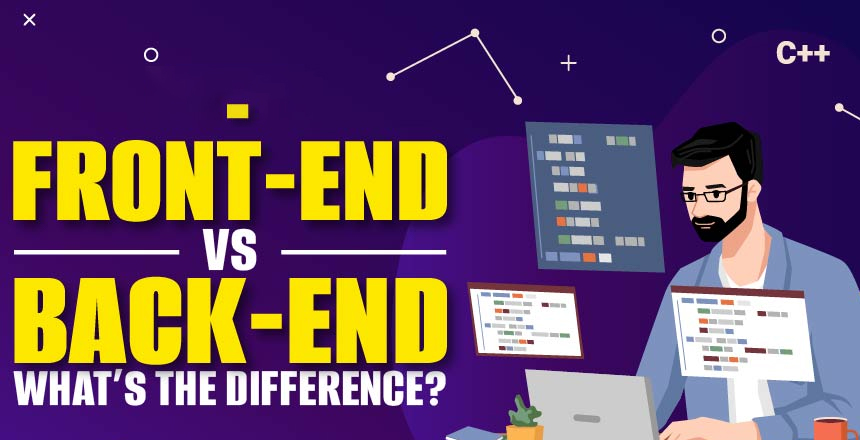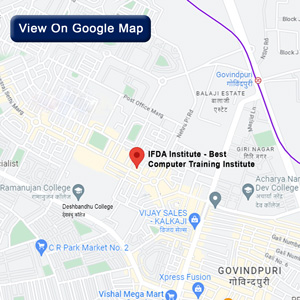This is the major difference between frontend and backend web development.
The sphere of web development can be roughly divided into two main areas: frontend and backend. Although both are centered on providing the optimal customer experience, frontend and backend developers have entirely different skill sets and roles. In this article, we will explain the differences between frontend and backend web development in more detail.
What do you understand by frontend web development?
The frontend represents the top or external layer of a website or an application that a user is able to navigate in the browser or on a mobile device. It encompasses the appearance of the site, the manner in which options are aligned and placed, the level of interactivity, and how friendly the site is to users.
Some key frontend web development responsibilities include:Some key frontend web development responsibilities include:
Front-end web/graphic design: designing the layout or the overall appearance of the application and determining sitemaps and wireframes and developing aesthetically pleasing yet functional interfaces.
HTML/CSS: Developing proper HTML tags to structure the content, as well as proper CSS code to format the content for display on the web.
JavaScript Programming - Enhancing interactivity and dynamism of a website and adding animations through the help of JavaScript frameworks such as React, Angular, and Vue.js.
Mobile Responsiveness: Ensure that the site can easily adapt and display well on the different devices through CSS media queries, Flexbox, or CSS Grid for fluid layout designs for mobile responsiveness.
Performance: optimizing frontend performance by lazy loading, caching, image compression, and many others.
The output that a frontend developer produces is what a user is able to perceive on the browser of his/her device when accessing a website or using a web/mobile application.
To answer this question, let us first define backend web development.
The frontend is the client-facing side of web and app development, while the backend is the
server-side of the development that supports the processes that happen in the background.
Some primary responsibilities handled by backend developers include:Some primary
responsibilities handled by backend developers include:
- Server and installation: installing server platforms, databases, and server and web platforms like Linux, Apache, and Nginx.
- API Development: Designing RESTful and SOAP APIs to ensure easy integration with frontend code and mobile applications.
- Data Processing: Writing the back-end code that contains the application’s business rules and data checks, algorithms, functions, etc.
- Data Storage: Offering database storage and access using SQL, MongoDB, Cassandra, and other database technologies.
- Security: Managing user authentication, authorization, encryption, and protection from cyber threats by properly setting systems.
- Scaling & Maintenance: There is always the need to bring in more resources to handle large traffic loads in the backend, as well as to check on the health of the systems and come up with ways and means of maintaining them.
Although users never get to view the backend code, they are aware of databases and servers that form the backbone of the entire application environment.
Main Aspects and Differences at a Brief Overview
Here is a quick summary of some of the main differences between frontend and backend web development:Here is a quick summary of some of the main differences between frontend and backend web development:
Front End Web Design | Back End Web Design
Cares about the appearance of the app and its interface | Cares about the app's functionality
and connections with other apps and services
1. It mostly focuses on HTML, CSS, and JS. It concerns itself with programming languages such
as Java, Python, Ruby, PHP, etc.
2. It works on the interface elements that are visible by the users, while the other is dedicated to
the server side of the application.
3. Web page seen on the web browser The types of output generated are functional responses to
API calls.
4. Responsiveness across devices is crucial. Security, speed, and reliability are the top priorities.
Constant change and new JS frameworks | More stable structures and slower advancement in
technology.
However, this paints a picture of what web development is at a broad level; modern web development demands stronger links between specializations. It is becoming increasingly valuable for both frontend engineers and backend developers to have knowledge of the full stack.
Integration Between Frontend and Backend
With modern web apps, there is a blurring of roles between the frontend and backend than has
ever been seen before. Here are some rising trends in the evolving web development
landscape:Here are some rising trends in the evolving web development landscape:
Thanks to the Jamstack principles, frontend developers use SSGs and headless CMSs to
develop whole websites with no backend counterparts. The leveraging of serverless computing
also assists with scaling.
On the other hand, frontend frameworks such as React take the responsibility of state
management, while backend languages such as Node.js enable one to build faster, real-time
updated sites on the server side.
Things like MongoDB help frontend JavaScript developers to easily manage database-related
logic in the backend.
Full-stack developers are in high demand. They understand frontend, backend, and devops and
can create balanced web apps quickly without specific engineers.
Thus it can be concluded that although specializations help to organize work for large dev
teams, a broad skill set is essential for modern web developers due to the various situations
they may encounter in practice.
Wrapping Up
When the major differences between the roles are realized, the groundwork for improved
interaction and results is set. Frontend developers are responsible for looks—obsessed with
perfect UI/UX. Backend developers maintain smooth operations that are exactly on par with the
requirements of the job. Synergic—they literally create the front-end and the back-end of a
comprehensive web or mobile application.
The technical aspect of the environment is predicted to remain dynamic in the coming years.
However, for any quality web build, strong, stable back-end systems that work in harmony with
effective, attractive front-end displays continue to be the ingredients for success. Challenging
developers at all levels is the most effective way for them to advance and be ready for
leadership positions in diverse and complex digital projects in the future.










